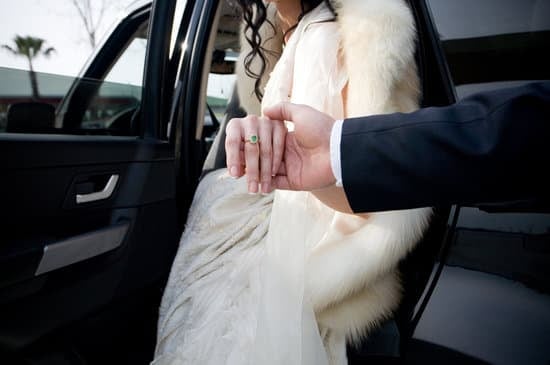The significance of a gay wedding in modern society cannot be overstated. As the fight for equality and recognition continues, the celebration of love between LGBTQ+ couples has become increasingly accepted and celebrated.
This section will explore the history of gay marriage, including the journey towards legal recognition, as well as the unique considerations and challenges that LGBTQ+ couples face when planning their weddings. Additionally, we will delve into the impact of same-sex marriage on the wedding industry, share heartwarming real love stories, and discuss the role of allies in supporting and celebrating gay weddings.
The legalization of same-sex marriage in many countries around the world represents a major milestone in the fight for LGBTQ+ rights. Despite ongoing obstacles and opposition, the recognition of gay marriage has paved the way for countless couples to openly express their love and commitment to each other through wedding ceremonies.
Planning a gay wedding comes with its own set of considerations and challenges, from navigating family dynamics to choosing LGBTQ+-friendly vendors. This section will shed light on these aspects and provide valuable insights for couples preparing to tie the knot.
Furthermore, LGBTQ+ wedding traditions and customs play an essential role in honoring love and identity within the ceremony. From personalized vows to inclusive rituals, gay weddings often embrace unique elements that reflect the couple’s journey and shared values. By exploring these traditions, we aim to highlight the beauty and diversity of love in all its forms within modern society.
History of Gay Marriage
The fight for marriage equality for same-sex couples has been a long and arduous journey, marked by both triumphs and setbacks. The history of gay marriage is a testament to the resilience and determination of the LGBTQ+ community in seeking recognition and acceptance. From activism to legal battles, the road to achieving marriage rights for same-sex couples has been paved with challenges and milestones.
The Fight for Equality
The fight for marriage equality can be traced back to the late 20th century, when the LGBTQ+ community began demanding the right to marry their partners. Activists and advocates worked tirelessly to raise awareness about the discrimination faced by same-sex couples who were denied the legal and societal benefits of marriage. The fight for equality gained momentum as more individuals and organizations joined in the struggle for recognition and acceptance.
Legal Recognition
One of the most significant milestones in the history of gay marriage was the legalization of same-sex marriage in various countries around the world. In 2001, the Netherlands became the first country to legalize gay marriage, sparking a global movement towards recognizing same-sex unions.
This landmark decision paved the way for other countries to follow suit, leading to an increase in legal recognition of gay marriages. Despite opposition from some quarters, many jurisdictions have since recognized and legalized same-sex marriage, affirming equal rights for LGBTQ+ couples.
Throughout history, the fight for marriage equality has been a testament to the strength and perseverance of LGBTQ+ individuals and their allies. The journey towards legal recognition has been marked by progress as well as challenges, ultimately shaping a new era of inclusivity and acceptance. The history of gay marriage serves as a reminder of how far we have come in upholding love and commitment in all its forms, culminating in joyous celebrations such as a gay wedding.
Planning a Gay Wedding
When it comes to planning a gay wedding, there are unique considerations and challenges that LGBTQ+ couples may face. From finding inclusive vendors to navigating family dynamics, there are several factors to take into account when organizing a same-sex wedding. Here are some key points to consider when planning a gay wedding:
- Inclusive vendors: One of the first steps in planning a gay wedding is finding vendors who are supportive and inclusive of LGBTQ+ couples. This can include venues, photographers, florists, and other wedding professionals who not only welcome same-sex weddings but also understand the specific needs and desires of LGBTQ+ couples.
- Family dynamics: Another consideration for LGBTQ+ couples is navigating family dynamics, especially if there may be opposition or lack of support from certain family members. Communication and setting boundaries with family members can be crucial in ensuring that the wedding day is a celebration of love and inclusivity.
- Legal considerations: Depending on the location, there may be legal considerations that need to be addressed when planning a gay wedding. This can include understanding marriage equality laws, obtaining marriage licenses, and ensuring that the ceremony is legally recognized.
In addition to these considerations, LGBTQ+ couples planning a gay wedding may also face challenges related to societal prejudices and stereotypes. Despite these challenges, many same-sex couples find joy and fulfillment in planning their special day, surrounded by love and support from friends, family, and allies.
LGBTQ+ Wedding Traditions and Customs
While the concept of a gay wedding may still be considered controversial by some, the truth is that they have become an important and joyous part of modern society. LGBTQ+ wedding traditions and customs play a significant role in these ceremonies, allowing couples to honor their love and identity in a unique and meaningful way.
One of the most important aspects of LGBTQ+ wedding traditions is the opportunity for couples to create a ceremony that truly reflects their love and commitment to each other. Many same-sex couples choose to incorporate rituals from various cultural backgrounds or create new traditions that hold personal significance, celebrating their identities and experiences as LGBTQ+ individuals.
For example, some gay weddings include rituals like handfasting, a symbol of unity in which the couple’s hands are tied together with ribbon or cord. Others may choose to exchange vows or rings in a way that reflects their shared values and experiences. These traditions not only add depth and meaning to the ceremony but also serve as powerful statements about the couple’s commitment to each other in the face of social change.
In addition, LGBTQ+ wedding customs often involve elements that celebrate queer identity and history. This can range from including rainbow colors in decorations or clothing, incorporating nods to famous queer figures or events in readings or speeches, or even having drag performances as part of the celebration. These elements help to create a sense of community and pride within the ceremony, reminding everyone present of the struggles overcome and victories achieved in the fight for equality.
| LGBTQ+ Wedding Traditions | Customs |
|---|---|
| Handfasting | Rainbow colors in decorations |
| Incorporating cultural rituals | Nods to famous queer figures |
| Rings exchange reflecting shared values | Drag performances as part of celebration |
The Impact of Same-Sex Marriage on the Wedding Industry
The legalization of same-sex marriage has not only had a profound impact on the lives of LGBTQ+ couples, but it has also significantly transformed the wedding industry. The acceptance and recognition of gay weddings have led to shifts in trends, changes in traditional practices, and the development of new market opportunities.
Here are some key trends and changes that have emerged in the wedding industry as a result of the legalization of same-sex marriage:
- Inclusive marketing: Many wedding vendors and businesses have adapted their marketing strategies to be more inclusive of LGBTQ+ couples. This includes featuring diverse couples in their advertisements, using gender-neutral language, and offering services that cater specifically to the needs of same-sex weddings.
- Rise in LGBTQ+ wedding planning services: With the increase in demand for services tailored to LGBTQ+ weddings, there has been a rise in specialized wedding planning companies that focus on providing guidance and support for same-sex couples. These organizations understand the unique considerations and challenges that come with planning a gay wedding, and they offer expertise in navigating these aspects.
- Evolving wedding traditions: Same-sex couples often seek to incorporate elements into their ceremonies that reflect their identities and experiences. As a result, there has been a shift towards reimagining traditional wedding customs to be more inclusive and reflective of diverse love stories.
Overall, the impact of same-sex marriage on the wedding industry has been significant, leading to greater inclusivity, diversity, and innovation within this sector. It has opened up new opportunities for businesses while also allowing couples to celebrate their love authentically and without compromise.
Real Love Stories
Love Knows No Gender
There are countless heartwarming love stories of gay couples who have overcome societal barriers to finally tie the knot. These stories serve as a testament to the enduring power of love, regardless of gender or sexual orientation. From overcoming adversity to celebrating their love in front of friends and family, these real-life narratives inspire and uplift not just the LGBTQ+ community, but anyone who believes in the beauty of love.
Challenges and Triumphs
Many gay couples have faced unique challenges as they navigated their journey towards marriage. From legal battles for recognition to finding acceptance within their own families and communities, these stories showcase the resilience and strength of LGBTQ+ individuals. The triumphs of these couples serve as a reminder that true love can conquer all obstacles, inspiring others to remain hopeful and steadfast in their pursuit of happiness.
Celebrating Diversity
Each gay wedding is a celebration of diversity, love, and inclusivity. These real love stories highlight the importance of creating spaces where LGBTQ+ couples can express their commitment to each other without fear or discrimination. By sharing their joyous moments with the world, these couples pave the way for greater acceptance and understanding, fostering a society that embraces love in all its beautiful forms.
These real love stories not only reflect the personal journeys of individual couples but also contribute to a larger narrative of progress and change within society. As more gay weddings take place and are celebrated openly, they continue to challenge existing norms and pave the way for a more inclusive future where love knows no boundaries.
The Role of Allies in Supporting and Celebrating Gay Weddings
As the fight for LGBTQ+ rights continues, allies play a crucial role in supporting and celebrating gay weddings. The presence of supportive friends, family members, and community allies can make a significant impact on the overall experience of a gay couple as they plan and celebrate their wedding. Allies can provide both emotional and practical support, helping to create a positive and inclusive environment for the couple on their special day.
One way that allies can show their support for gay weddings is by actively participating in the planning and preparation process. This may include offering assistance with logistical details, providing financial support, or simply being present to listen and offer guidance when needed.
Additionally, allies can help to advocate for equality within religious or cultural institutions that may not traditionally recognize same-sex marriage, creating opportunities for the couple to honor their love in a way that aligns with their beliefs and values.
Furthermore, allies can also play a key role in advocating for legal protections and equal rights for LGBTQ+ couples. By using their voices to push for policy changes at local, national, and global levels, allies can help to create a more inclusive society where all couples have the freedom to marry whomever they choose. This advocacy extends beyond the wedding itself and works toward creating a future where same-sex marriages are fully recognized and celebrated worldwide.
| Supportive Actions | Impact |
|---|---|
| Actively participate in wedding planning | Creates an inclusive environment for the couple |
| Advocate for legal protections | Promotes equality for LGBTQ+ couples |
| Offer emotional support | Helps create a positive experience for the couple |
Navigating Religious and Cultural Aspects
When it comes to planning a gay wedding, LGBTQ+ couples often face unique challenges in navigating religious and cultural aspects. Many religions have traditionally not been accepting of same-sex relationships, creating a difficult landscape for couples who want to honor their faith while also celebrating their love.
One of the biggest obstacles that LGBTQ+ couples may encounter when planning a wedding is finding a religious or cultural setting that is accepting and supportive of their union. This can be particularly challenging for couples who come from conservative or traditional backgrounds. However, there are also many inclusive and progressive religious institutions that welcome same-sex weddings with open arms, providing a safe and affirming space for couples to exchange vows.
In many cases, LGBTQ+ couples may choose to incorporate elements from both partners’ religious or cultural backgrounds into their wedding ceremony. This can be a beautiful way to honor each other’s heritage while creating a unique and meaningful celebration of love.
It’s important for allies, including family members and friends, to support these decisions and respect the couple’s desire to blend traditions in a way that feels authentic to them. Ultimately, overcoming obstacles related to religion and culture requires open-mindedness, understanding, and a willingness to embrace love in all its forms – values that are fundamental to the true spirit of a gay wedding.
Conclusion
In conclusion, the journey towards legal recognition and societal acceptance of same-sex marriage has been a long and hard-fought one. From the fight for equality to the gradual changes in laws and social attitudes, gay weddings have emerged as a powerful symbol of love and commitment in modern society.
The significance of these ceremonies goes far beyond just the couple involved, representing a triumph of love over discrimination and an affirmation of the LGBTQ+ community’s right to love and be loved.
Planning a gay wedding comes with unique considerations and challenges, but it also presents an opportunity to create meaningful traditions and customs that honor love and identity. From personalized vows to inclusive wedding parties, LGBTQ+ couples have redefined what it means to celebrate their union in ways that are authentic to their experiences and relationships.
As allies continue to play a crucial role in supporting and celebrating gay weddings, there is hope for further progress in creating inclusive spaces for all couples to express their love through marriage.
Ultimately, the beauty of a gay wedding lies in the simple yet profound act of two people coming together to proclaim their love for each other in front of friends, family, and society. As we continue to navigate religious and cultural obstacles, we must remember that every love story deserves celebration, including those of LGBTQ+ couples.
The impact of same-sex marriage on the wedding industry reflects not only changing trends but also the enduring power of love-regardless of gender or sexual orientation. A gay wedding is not just about two people getting married; it represents a victory for equality, acceptance, and above all, love.
Frequently Asked Questions
How to Do a Gay Wedding Ceremony?
In order to perform a gay wedding ceremony, it is important to first check the laws in the specific location regarding same-sex marriage. Then, choose an officiant who is legally able to perform the ceremony and work together to personalize the event to fit the couple’s preferences and beliefs.
What Do You Call the Bride and Groom in a Gay Wedding?
In a gay wedding, the terms “bride” and “groom” may not accurately represent the individuals getting married. Some couples may choose to use gender-neutral terms like “partner” or “spouse,” while others may still use traditional terms based on their personal preferences.
When Was the First Gay Couple?
The concept of a “gay couple” has existed throughout history, but in terms of recorded legal recognition and documentation, the first same-sex marriage recognized by law was in Denmark in 1989. Over time, more countries began legalizing same-sex marriage, marking significant milestones for LGBTQ+ rights worldwide.

I have been involved in marriages for over 20 years helping couples and singles understand more about them.





